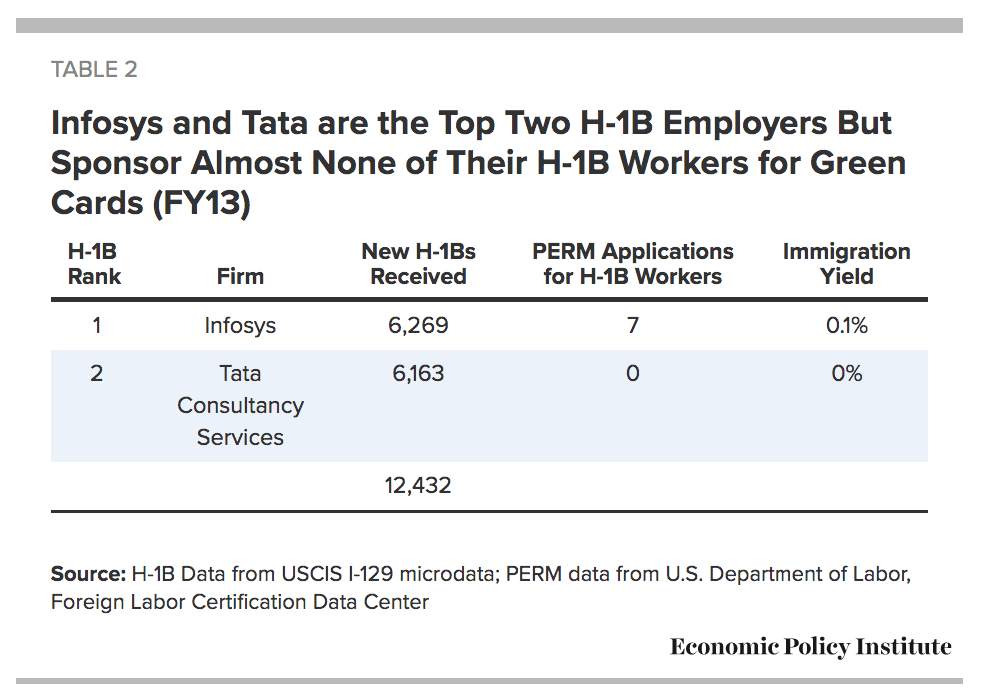How Infosys and Tata Keep Long Term Indentured H1-Bs
Executive Summary
- How Infosys and Tata treat their H1-B employees illustrates that the program is intended to keep the maximum number of employees unable to leave their first employer.

Introduction
This is from Ron Hira, of the top researchers in the area of H1-B.
H-1B is not a bridge to permanent immigration
The proponents for H-1B expansion claim that the H-1B program is a stepping-stone to permanent immigration. But the vast majority of H-1B workers at Infosys and Tata never get on path to legal permanent residence (often referred to as getting a “green card”) and citizenship:(Emphasis Added)
In FY13, Infosys only sponsored seven H-1B workers for permanent residence, and Tata sponsored ZERO H-1B workers, while the U.S. government approved 12,432 H-1B visa petitions for these two companies alone. (See Table 2) In other words, the H-1B workers Infosys and Tata hire are being used as temporary, cheaper, disposable labor, not as a way to permanently introduce talent and innovation into the American labor market. – Economic Policy Institute
What happens to most H1-B workers that work for Infosys, Tata and other similar outsourcing firms?
“The H-1B worker learns the job and then rotates back to the home country and takes the work with him,” explains Ron Hira, an immigration expert who teaches at the Rochester Institute of Technology. None other than India’s former commerce secretary once dubbed the H-1B the “outsourcing visa.”
This is also covered by Dr Norm Matloff.
“Employers know they have these workers over a barrel. They aren’t going to demand a raise during those six years [of green card sponsorship], even if they deserve it, and they aren’t going to move on to another company, because they know doing those things will jeopardize their chances of getting their green cards in time” — Professor Sankar Mukhopadhyay, 2012 (note: the Indian outsourcing firms rarely sponsor their foreign workers for green cards, so this study refers to mainstream firms)
Conclusion
The objective of employers is to entice H1-B visa workers to the US to work for less than the prevailing wage, and then to keep them in the H1-B state as long as possible. At the same time, the margin made on them continues to flow to the top people in the respective companies. This is, of course, the same business model as companies that use no H1-B labor.
However, the distinction is that the H1-B program is a non-market mechanism that allows the employer to very highly control the H1-B visa holder and to receive excessive profits. We cover this undue control in the article How H1-B Law Ties US Citizenship to the Employer.
References
*https://www.epi.org/blog/new-data-infosys-tata-abuse-h-1b-program/
https://en.wikipedia.org/wiki/H-1B_visa
http://heather.cs.ucdavis.edu/itaa.real.html
*https://www.motherjones.com/politics/2013/02/silicon-valley-h1b-visas-hurt-tech-workers/
https://www.nohr1044.com/
